Greenlings and Lingcod: Family Hexagrammidae
Species: Ophidon elongatus (Girard, 1854); from the Greek words ophis (snake) and odons (tooth), and the Latin word elongatus (elongate shaped).
Alternate Names: Ling, Pacific cultus, cultus cod, leopard cod, blue cod, gator, greenlinger, green cod and my favorites—slinky linky and lingasaur. Early-day names included buffalo cod, bocalao, card and testoni. Called molva in Mexico.
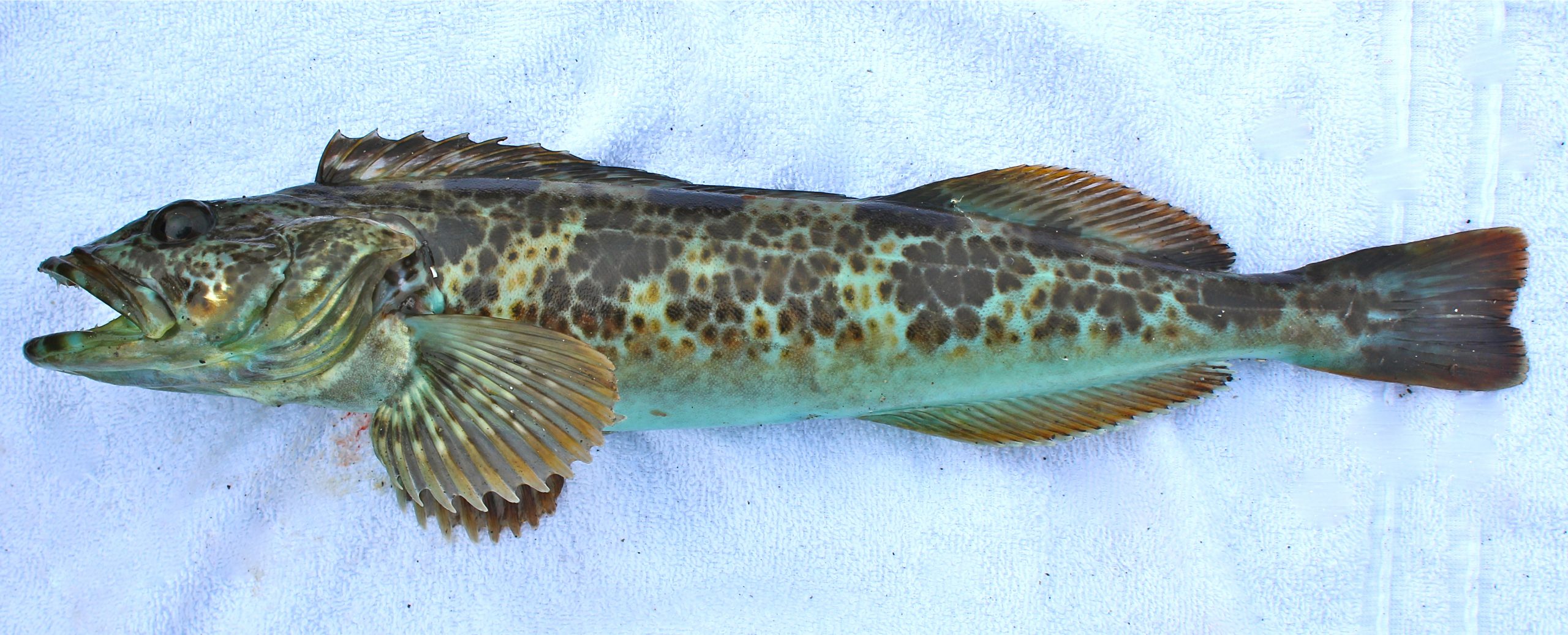
A small lingcod I caught from the Citizens Dock in Crescent City
Identification: Elongate shaped with a long dorsal fin, large pectoral fins, and a large mouth full of canine-like teeth. Their coloring is gray-brown to bluish or green, with dark, yellow or orange spotting and mottling. Some fish are a bright green and some older fish are a fairly bright yellow.
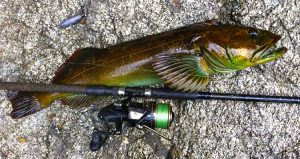
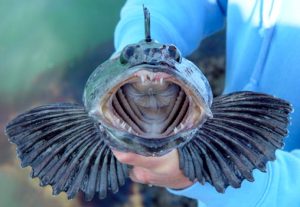 Size: To 60 inches and at least 105 pounds. Most lingcod caught from piers are less than ten pounds in weight. The California angling record fish weighed 56 lb 0 oz. It was caught at Crescent City in 1992. The diving record fish weighed 37 Lbs 0 oz and was taken near Mendocino in 2012. The listed IGFA World Record is 82 Lbs 9 oz for a fish caught in Homer, Alaska in 2007.
Size: To 60 inches and at least 105 pounds. Most lingcod caught from piers are less than ten pounds in weight. The California angling record fish weighed 56 lb 0 oz. It was caught at Crescent City in 1992. The diving record fish weighed 37 Lbs 0 oz and was taken near Mendocino in 2012. The listed IGFA World Record is 82 Lbs 9 oz for a fish caught in Homer, Alaska in 2007.
Range: From Punta San Carlos, southern Baja California, Isla Natividad, central Baja California, to California and north to the Shumagin Islands, southwestern Gulf of Alaska, and perhaps the eastern Bering Sea as far north as Yukon-Kuskokwim Delta. Common from Punta San Antonio, central Baja California to Kodiak Island, Gulf of Alska.
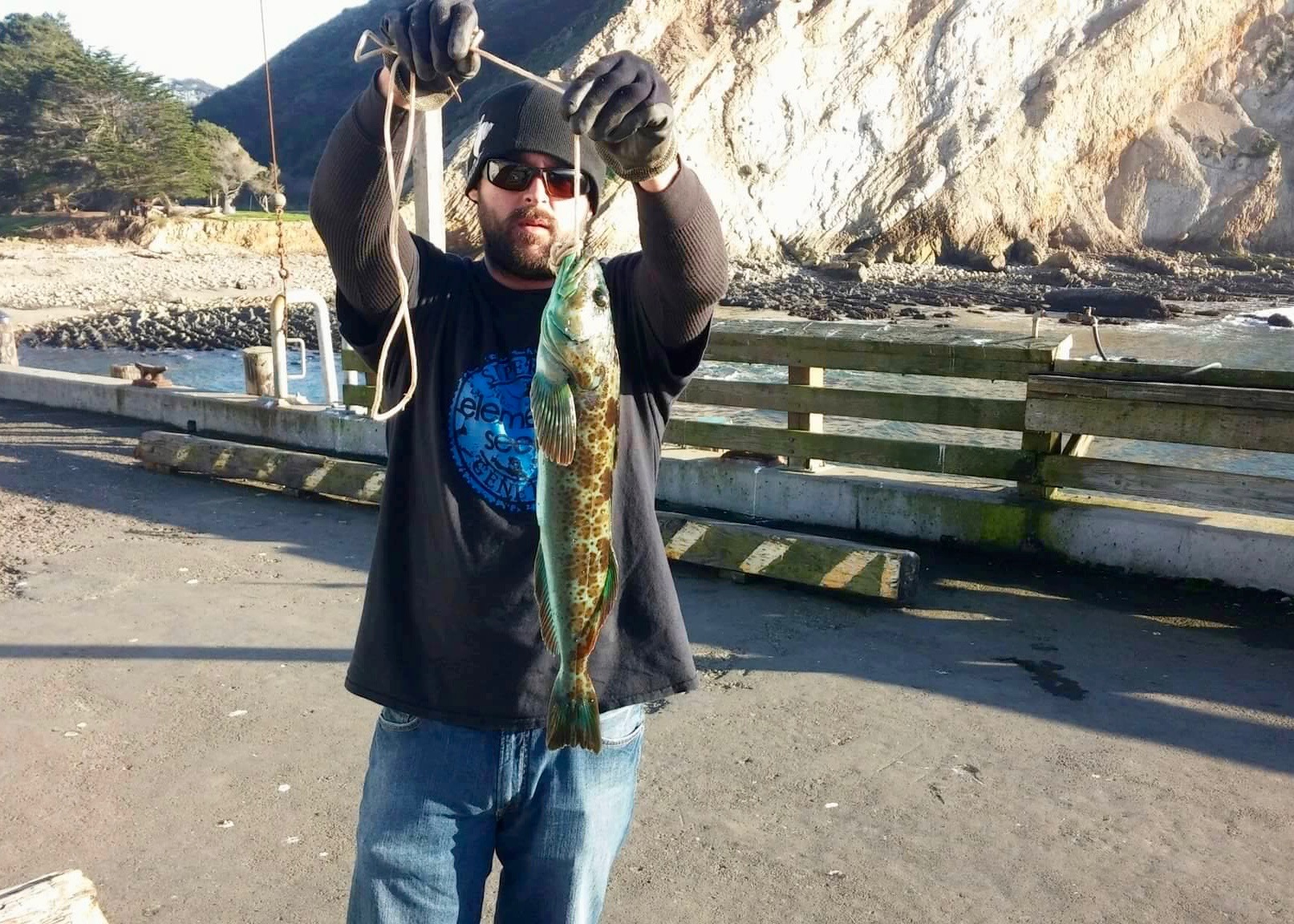
Lingcod from the Point Arena Pier
Habitat: South of Point Conception lingcod are typically a deep-water fish; north of Point Conception lingcod will be found from inter-tidal areas out to deep water. The bigger the ling the deeper they tend to live and they’ve been recorded to a depth of 1,558 feet. Small juvenile lingcod settle into sandy areas at about three inches in length and stay there until they are about 14-inches long. The fish then move out into rocky areas, progressively moving into deeper areas as they age. Many, but not all, migrate into shallower water to spawn during the late fall and winter months. Lings are bottom-dwellers classified as ambush predators whose cryptic (i.e. camouflage) coloration allows them to blend into the background. When prey comes close, they will dart out using the power of their pectoral fins and grab the unsuspecting victim with their large mouth and long, pointed teeth. They are able to surprise and capture fairly mobile prey.
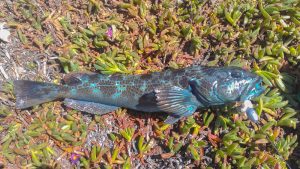
Shore-caught lingcod caught by Shawny
Piers: Most lingcod caught from piers are of one of two types. In central California, primarily from Avila to San Simeon, but also in Humboldt Bay and Crescent City Harbor, small juvenile lingcod will often move in around the piers (and sandy areas) during the summer and fall. In Central California, their appearance often will coincide with the arrival of schools of juvenile bocaccio. In Eureka and Crescent City, the young lingcod are often present the same time that juvenile rockfish, mainly small black rockfish, are using the piers as a nursery area. Sometimes the schools are mixed; at other times, it seems the lingcod swim just under the schools of rockfish. Most of these lingcod are small—under a foot, and they are illegal. At piers north of San Francisco, especially those located near rocks or reefs, anglers will see larger lingcod as one of the normal pier species. Most of these lingcod will be around two feet in length but larger fish are caught every year, especially in the fall and early winter. The best piers to catch lingcod are the Monterey Coast Guard Pier, Santa Cruz Wharf, San Francisco Municipal Pier, Point Arena Pier, Trinidad Pier and Citizens Dock in Crescent City.
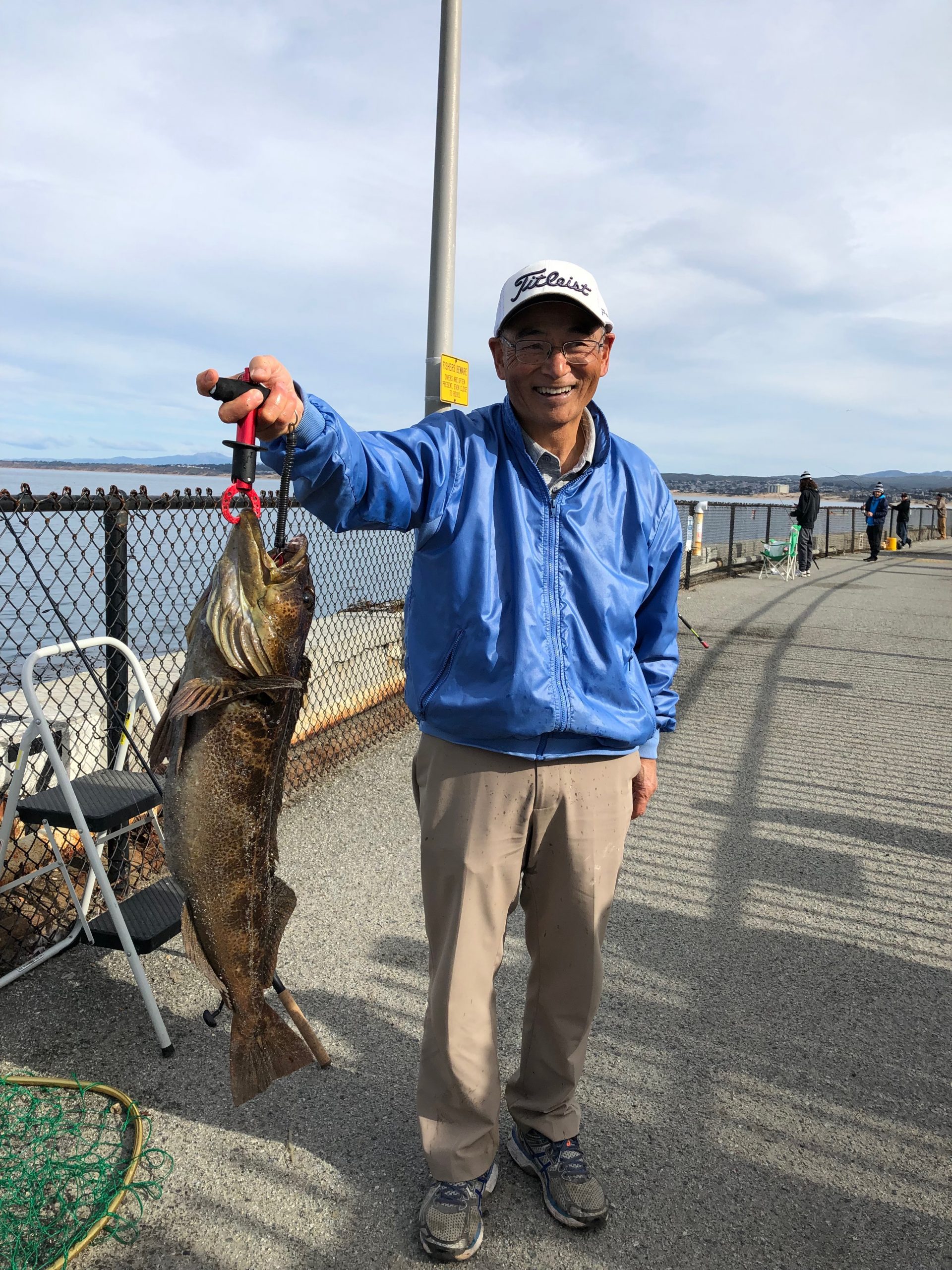
Lingcod caught at the Monterey Coast Guard Pier by Teru
Shoreline: One of the main prizes for rocky shore anglers in central and northern California.
Boats: A prize for boaters from central California north; a few are taken in deeper waters in southern California. Traditionally, the greatest catch was made out of Monterey and Santa Cruz although substantial numbers were also landed on boats from every port north of Morro Bay. In southern California some are taken from deeper waters of the Channel Islands and the Los Coronados Islands. All areas saw a decrease in the ‘90s but the species has been making a good comeback in numbers during the past decade.
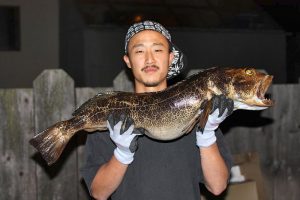
Lingcod caught from the Monterey Coast Guard Pier by MBay
Bait and Tackle: Anglers specifically fishing for lingcod need to remember to bring tackle heavy enough for the fish since lings over ten pounds in size are always a possibility. Almost any bait will work although a lively small fish makes the best bait. If live bait is unavailable, try a whole anchovy or a cut sardine or herring. Lings can also be taken on squid, octopus, shrimp, and even fresh mussels but moving bait is almost always better. Lingcod will also hit artificials, especially in the fall and winter months. Lures such as swimbaits and spoons seem to work best.
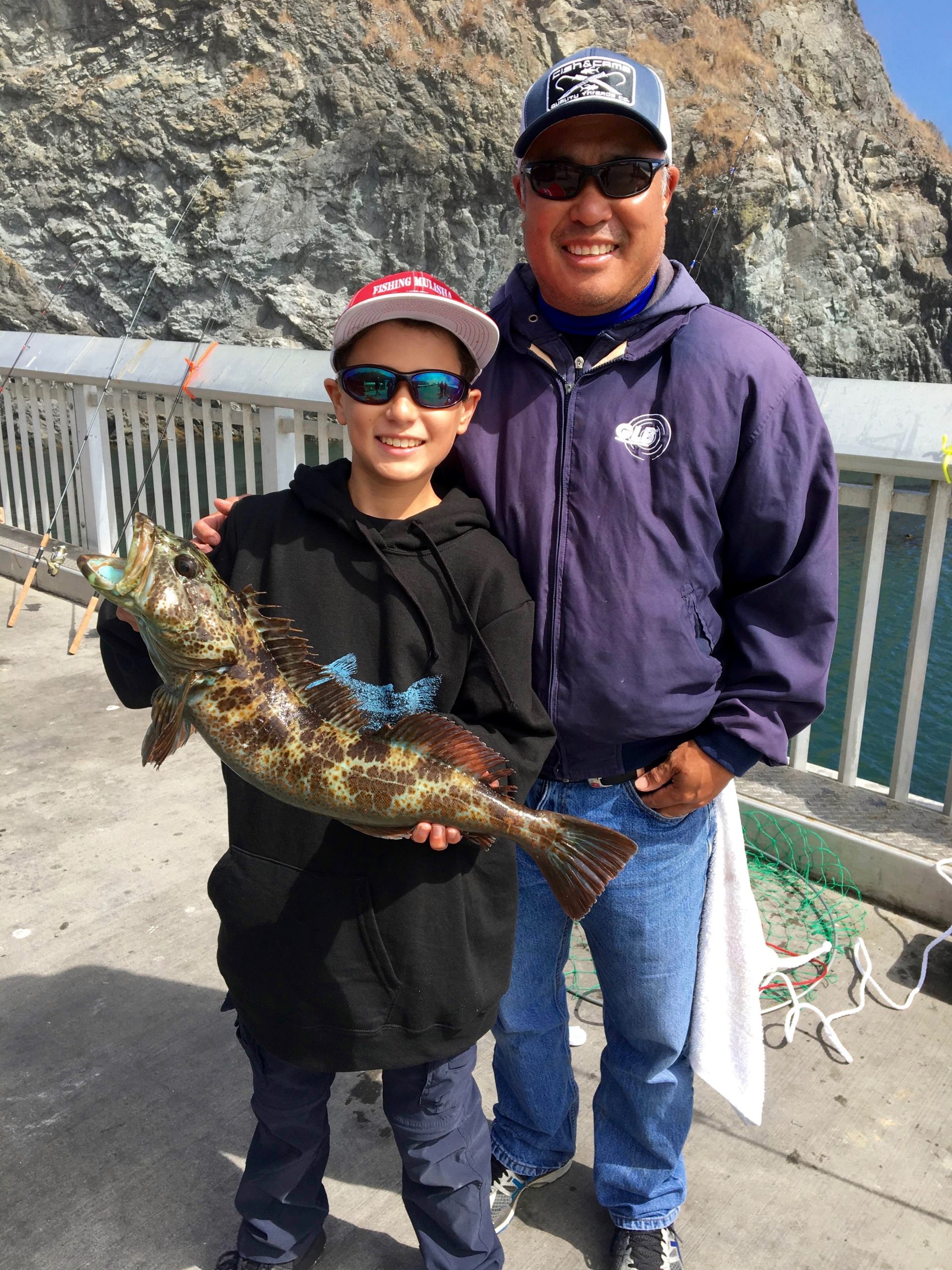
Lingcod caught by David Shigematsu at the Trinidad Pier Kid’s Derby in 2018
Food Value: Excellent, mild-flavored fillets that are firm textured, large flaked, and modrate in fat content. Lingcod meat can be prepared in almost any manner but I prefer to fillet it and fry it. Many people like to steak it and broil it, or cook it on a bar-b-cue, but the low fat content means it can dry out somewhat. Remember, low fat content means to add oil as in frying. High fat content means to remove the oil by methods such as broiling. Sometimes
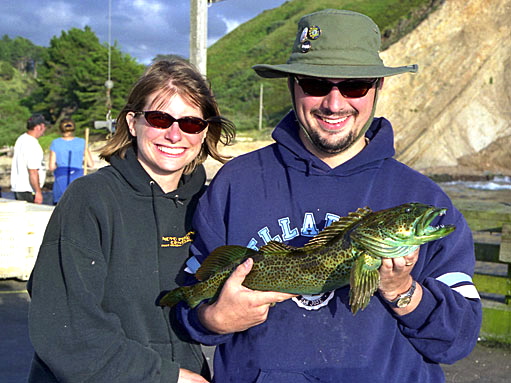
Lingcod caught from the Point Arena Pier by Dan
Comments: Lingcod are voracious in nature as well as being truculent, pugnacious fighters, one of the most prized fish a pier angler will encounter. Remember to watch out for those large, large teeth. Lings live to at least 20 years of age.
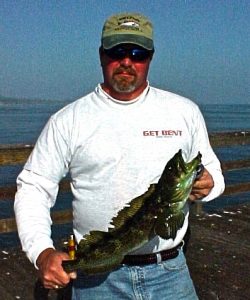
Lingcod caught by “Sinker” at the Goleta Pier
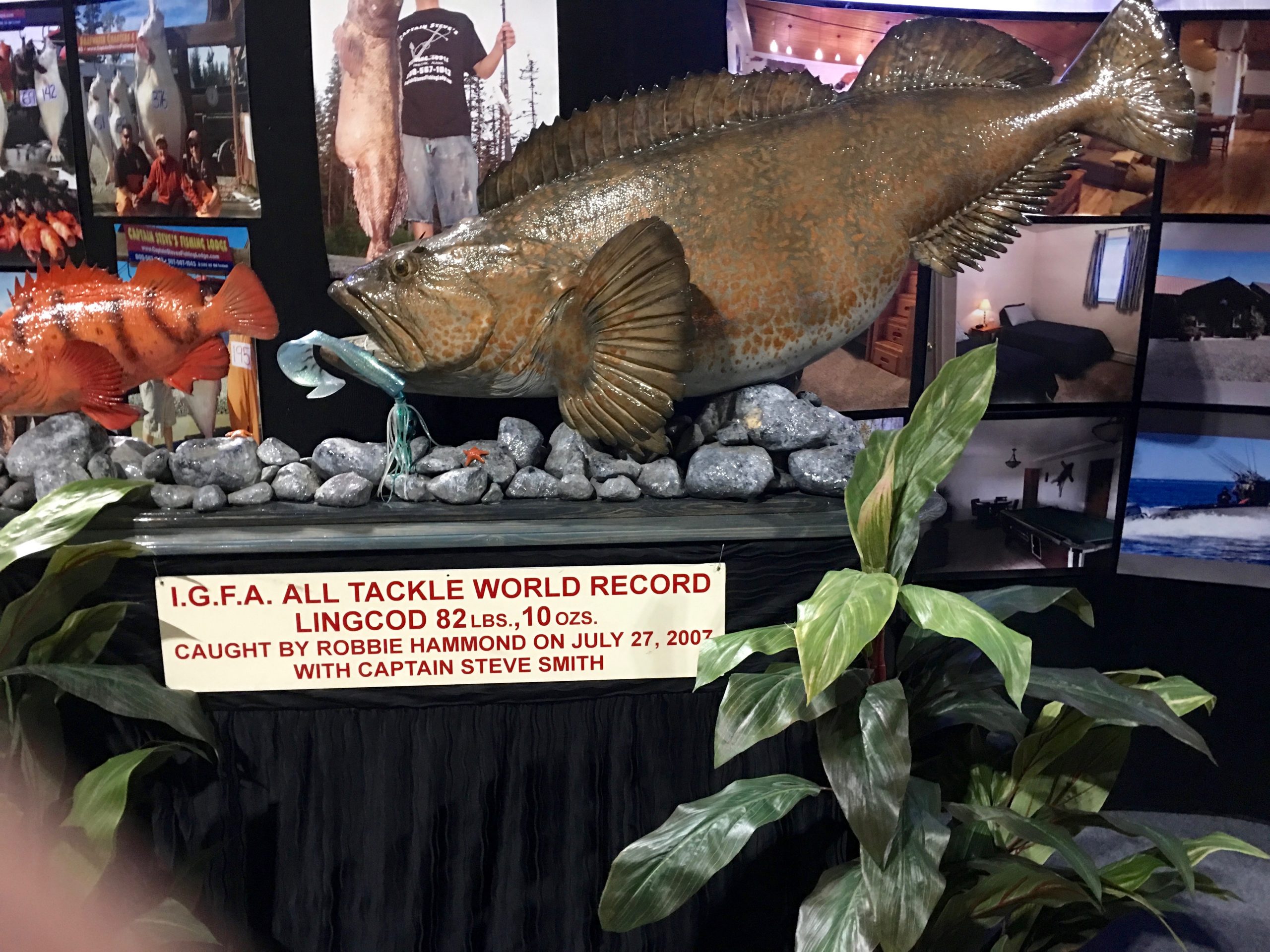
A picture taken at the Fred Hall Fishing Show in 2018 — Record Lingcod 82 Lbs, 10 Oz. Taken in Alaska.
Large lingcod caught at piers
40 Lbs. — Santa Cruz Municipal Wharf, Ray Springer, November 19, 1922—Source: Santa Cruz Evening News, November 20, 1922
25 Lbs. — Santa Cruz Municipal Wharf, Emile Benett, August 8, 1930—Source: Santa Cruz Evening News, August 9, 1930
24 Lbs. — Moss Landing Pier, E. P. Briggs, April 15, 1940—Source: Santa Cruz Evening News, April 16, 1940
23 Lbs. — Santa Cruz Municipal Wharf, June 27, 1930—Source: Santa Cruz Evening News, June 28, 1930
22 Lbs. — Santa Cruz Municipal Wharf, “Monk” Avila, September 22, 1932—Source: Oakland Tribune, September 23, 1932
18 Lbs. — Santa Cruz Municipal Wharf, Tony Vierra, August 5, 1940—Source: Santa Cruz Sentinel, August 6, 1940
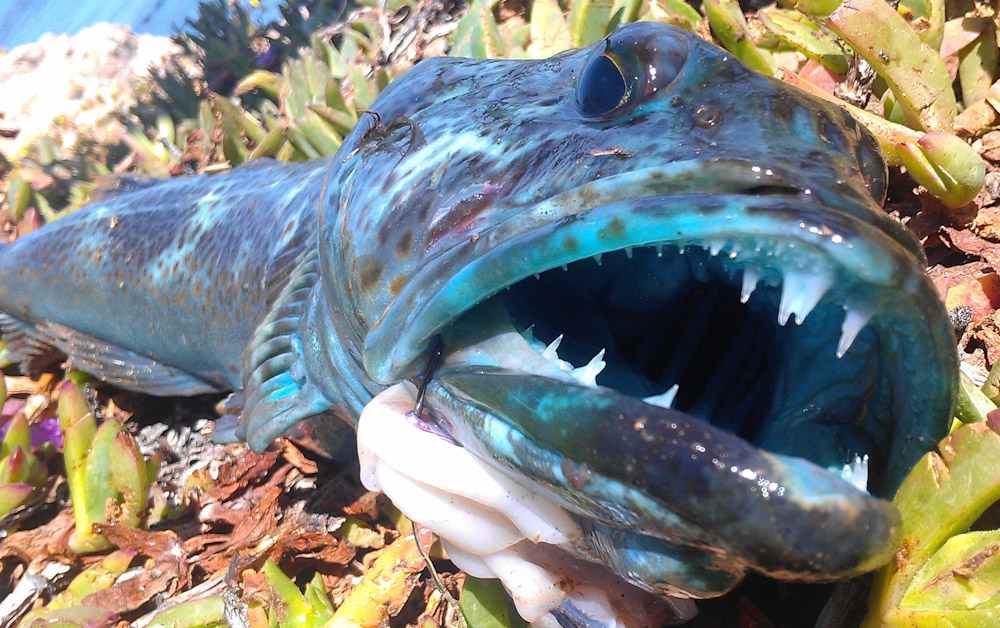
Some lingcod caught from boats
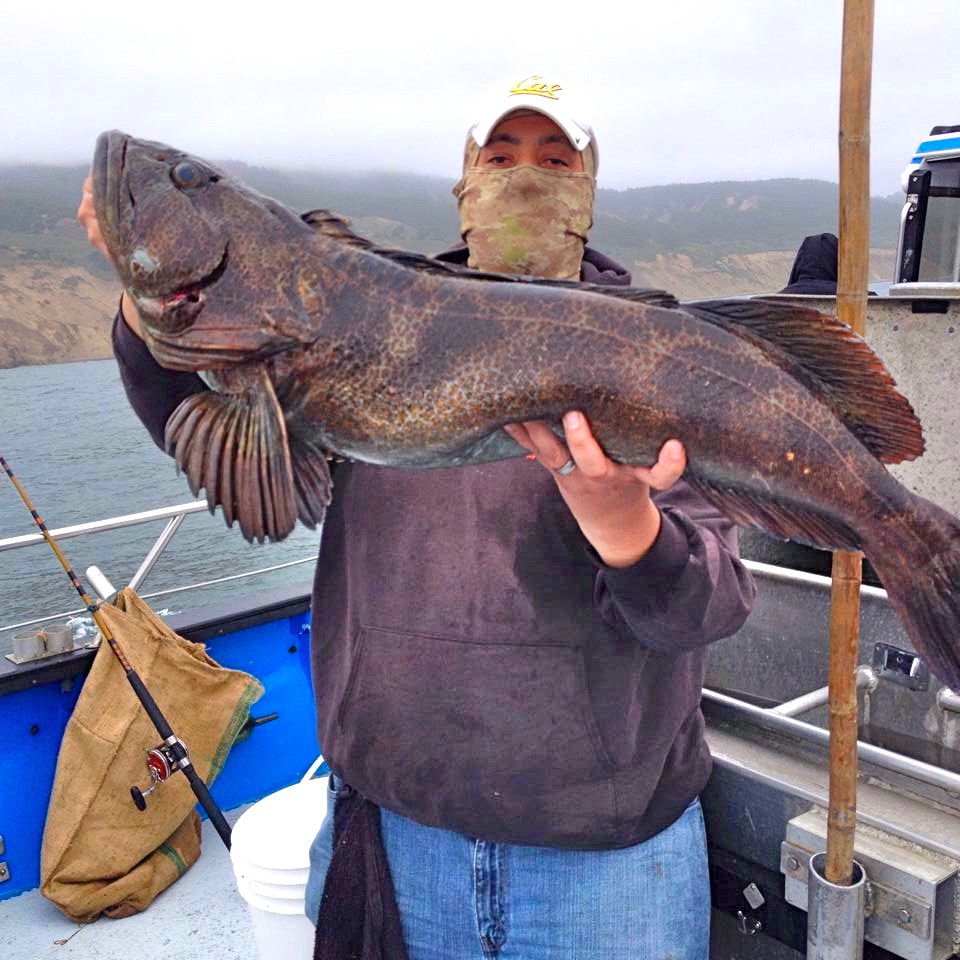
Lingcod caught by Bigunindaboat
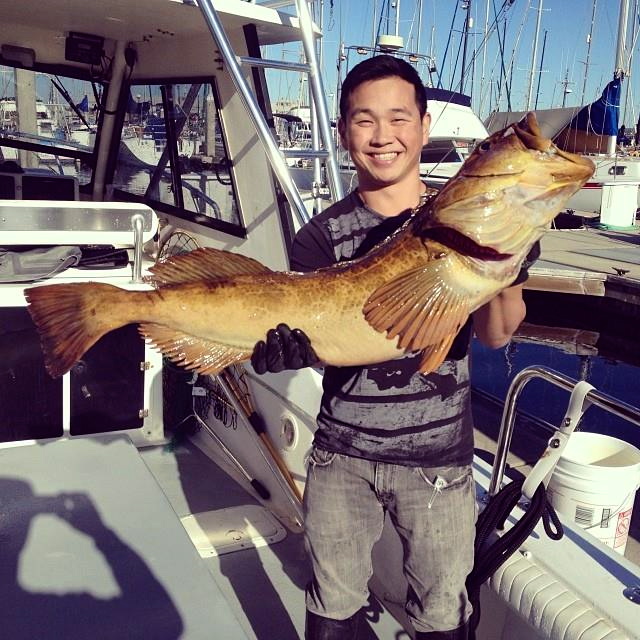
Lingcod caught in Monterey
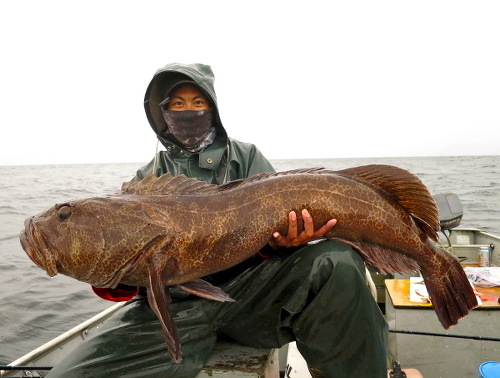
Lingcod caught in Alaska by calaznfisher
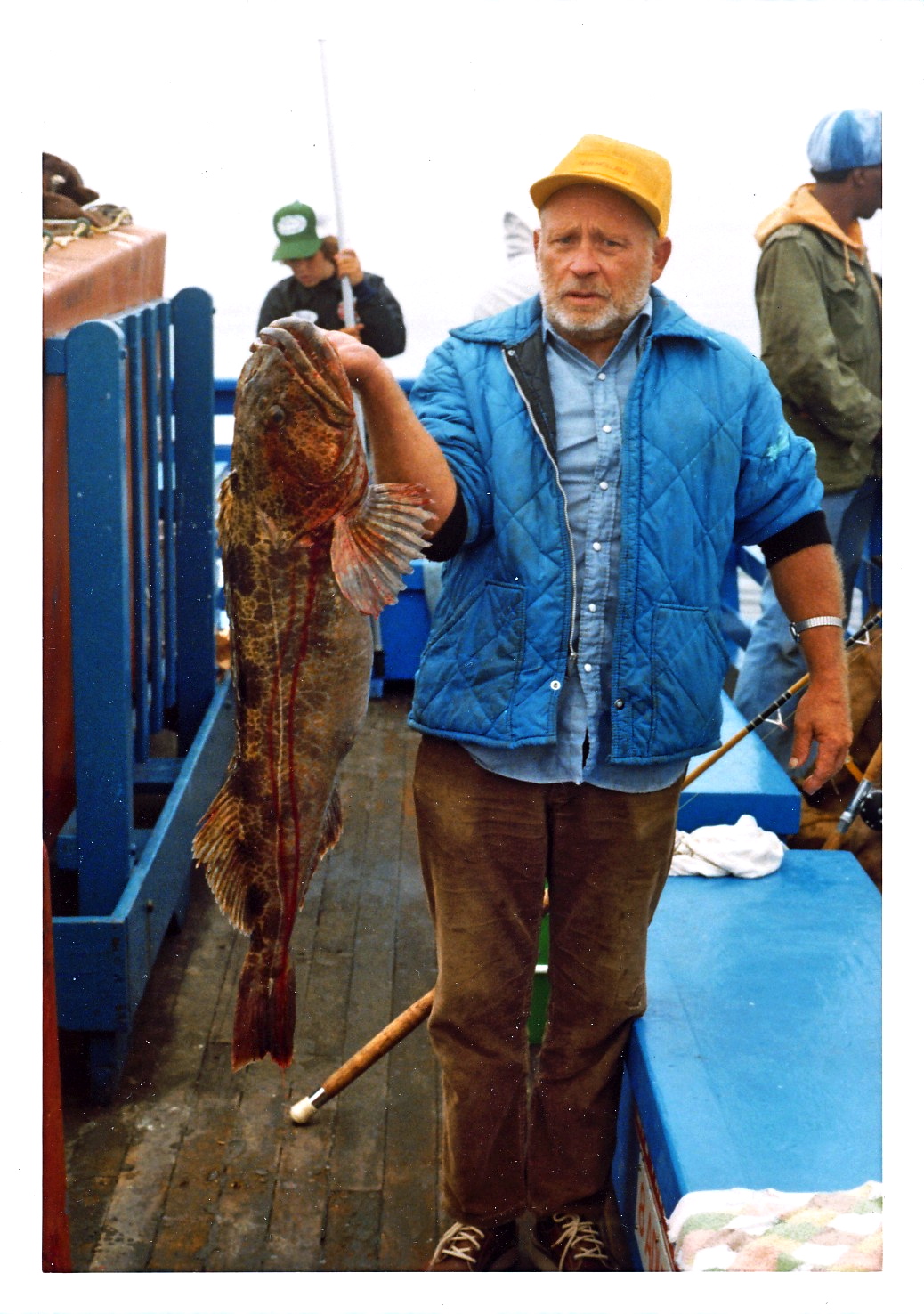 A lingcod I netted for an angler in Santa Cruz
A lingcod I netted for an angler in Santa Cruz
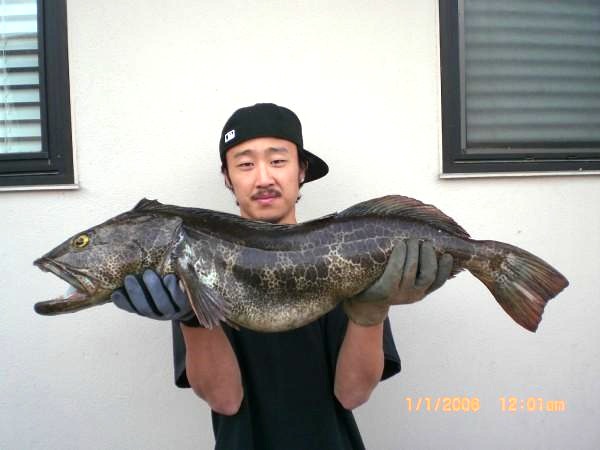
Thanks for the info! Fishing Trinidad pier in a couple weeks, hope to get me a ling!
Good luck!
Greenlings and Lingcod are fascinating members of the Hexagrammidae family. Known for their unique appearance and strong habitats, they play a significant role in marine ecosystems. If you’re exploring marine life, their characteristics are definitely worth learning more about!